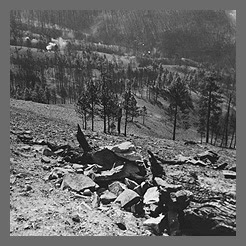TEXAS FOREST SERVICE HONORED FOR OUTSTANDING CONTRIBUTIONS TO WILDLAND FIREFIGHTING
June 21, 2012 – COLLEGE STATION, Texas – Texas Forest Service was presented last week with the Pulaski Award, a national honor for outstanding service in wildland firefighting.
The award, commending the agency for its response during the 2011 wildfire season, is presented annually by the National Interagency Fire Center. It was announced at the Southern Group of State Foresters annual conference in Louisville, Ky.
The coveted 30-inch bronze statue is named after U.S. Forest Service Ranger Ed Pulaski, who led a crew to safety during the Great Fire of 1910. First presented in 1998, this is the first time the Pulaski Award has come to Texas. It will stay with Texas Forest Service for one year then will be shipped to the next recipient.
Texas Forest Service Associate Director Mark Stanford said the recognition is an honor for the emergency responders who bravely served Texas during last year’s unprecedented wildfire season. More than 30,000 wildfires burned almost 4 million acres, destroying 2,946 homes across the state.
The wildfires were suppressed with assistance from more than 16,000 emergency responders from all 50 states, along with 239 dozers, 954 engines and 246 aircraft.
Gary Bowers, chairman of the National Interagency Fire Center Governing Board, wrote in a letter to Texas Forest Service that the agency demonstrated “exceptional work in interagency cooperation and coordination, safety of their firefighters and the public, the development of partnerships and group performance in fire management and suppression.”
“It is our hope that collaboration efforts such as this will increasingly inspire and inform new cooperative efforts across the country,” Bowers wrote. “Congratulations on this award and the excellent work that it recognizes.”
(Reprinted with permission from Texas Forest Service - The Texas A&M University System)











